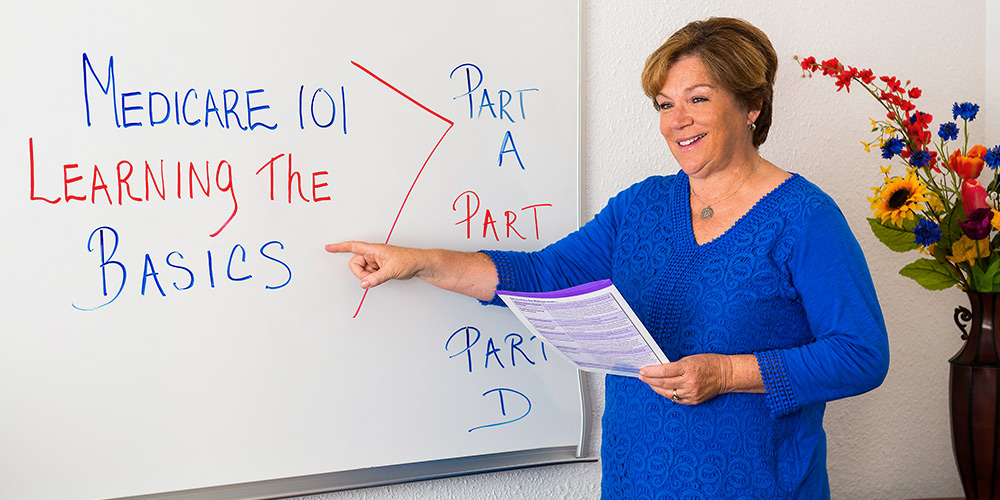Understanding Medicare

Medicare is a health insurance program administered by the federal government, providing health insurance coverage to people who are 65 years of age or older, under age 65 with certain disabilities and at any age with End-Stage Renal Disease (ESRD – permanent kidney failure requiring dialysis or a kidney transplant). Medicare is broken down into four main categories:
MEDICARE Part A (Hospital Insurance)
You are entitled to receive Medicare Part A on the first day of the month you turn 65. In most cases, it's free. You usually won't pay a premium for Medicare Part A if you or your spouse paid Medicare taxes for at least 10 years while working.
In most cases, you will automatically be signed up for Part A. If you haven’t met the requirements for Part A you may be able to buy Part A for a premium.
You will automatically get Part A if you already receive benefits from Social Security or from the Railroad Retirement Board (RRB). If you aren't getting Social Security benefits (for example, if you are still working), you may need to sign up for Part A, even if you are eligible to receive part A at no cost.
Medicare Part A Covered Services:
In-patient care in hospitals (such as critical access hospitals, inpatient rehabilitation facilities, and long-term care hospitals)
In-patient care in a skilled nursing facility (not custodial or long-term care)
Hospice care services
Home health care services
MEDICARE Part B (Medical Insurance)
Part B coverage offers medically necessary doctor’s services, outpatient care and most other services that Part A does not cover. These may include physical or occupational therapies and some home health care services.
Part B also covers some preventive services. Though many services and products are covered, keep in mind that Part B is still not a complete insurance coverage plan. Original Medicare (Part A and Part B) covers many health care services and supplies; however, there are many costs (“gaps”) it doesn’t cover.
If you already get benefits from Social Security or the Railroad Retirement Board (RRB), you may be enrolled automatically in Part B, effective the first day of the month in which you turn 65. You also may be eligible for Part B if you are disabled, or, in certain situations, if you have end-stage renal disease (ESRD).
Be mindful, however, that if you don't sign up during your initial enrollment period, you may have to pay a late enrollment penalty. Medicare Part B premium levels are set each year by the Centers for Medicare & Medicaid Services (CMS), and vary based on your annual income. If you choose only Original Medicare, you pay an annual deductible, after which Medicare will begin to pay for Part B services.
Medicare Part B Covered Services:
Office visits to a primary care physician or a specialist
Some preventive services, such as flu shots and mammograms
Laboratory costs, including blood work and X-rays
Medical equipment, such as wheelchairs and walkers
Outpatient physical therapy
Mental health care
Ambulance services
One initial "Welcome to Medicare" physical exam with subsequent annual "Wellness Exams"
Home Health Care Services: medicare approved service, medically necessary skilled care services and medical supplies.
Medicare Part C (Medicare Advantage)
A type of Medicare health plan offered by a private company that contracts with Medicare to provide you with all your Part A and Part B benefits.
Medicare Advantage Plans include Health Maintenance Organizations, Preferred Provider Organizations, Private Fee-for-Service Plans, Special Needs Plans, and Medicare Medical Savings Account Plans.
If you’re enrolled in a Medicare Advantage Plan, most Medicare services are covered through the plan and aren’t paid for under Original Medicare.
Most Medicare Advantage Plans offer prescription drug coverage
Medicare Part D (Prescription Drug Coverage)
Medicare Prescription Drug Plans are stand-alone drug plans that add prescription drug coverage to Original Medicare. Prescription Drug Plans assist with the cost of prescription drugs, vaccines, and some medical supplies not covered by Medicare Part A and Part B.
Part D was designed to aid people with Medicare, lower their prescription drug costs and to protect against future costs. This prescription drug plan will allow you to have access to medically necessary drugs. Except for certain situations, you should enroll in Part D when you first become eligible to avoid penalties.
Keep in mind some Part D plans have a coverage gap (or the “donut-hole”). This means that after you and your plan have spent a certain amount of money for covered drugs; you have to pay all costs out-of-pocket for your drugs up to a limit.
Your yearly deductible, your coinsurance or copayments, and what you pay in the coverage gap all count towards this out-of-pocket limit. The limit doesn’t include the drug plan’s premium.
Each Medicare Prescription Drug Plan has its own list of covered drugs (called a formulary). Many Medicare drug plans place drugs into different “tiers” on their formularies. Drugs in each tier have a different cost.
A drug in a lower tier will generally cost you less than a drug in a higher tier. In some cases, if your drug is on a higher tier and your prescriber thinks you need that drug instead of a similar drug on a lower tier, you or your prescriber can ask your plan for an exception to get a lower copayment.
Provide your Medicare card, Prescription Drug Plan Card, and a Photo ID. If you are eligible for both Medicare & Medicaid, you will want to provide proof of your enrollment in Medicaid as well.
If you need to go to the pharmacy before your membership card arrives, you can use any of these as proof of membership:
- The acknowledgement, confirmation, or welcome letter you got from the plan.
- An enrollment confirmation number you got from the plan, and the plan name and phone number.
- A temporary card you may be able to print from MyMedicare.gov.
If you don’t have any of the items listed above, your pharmacist may be able to get your drug plan information if you provide your Medicare number or the last 4 digits of your Social Security Number.
If your pharmacist can’t get your drug plan information, you may have to pay out-of-pocket costs for your prescriptions. If you do, save your receipts and contact your plan to get your money back.
Are you struggling to make sense of your Medicare options?
Our guidance will make picking the right plan easy. Guaranteed.




